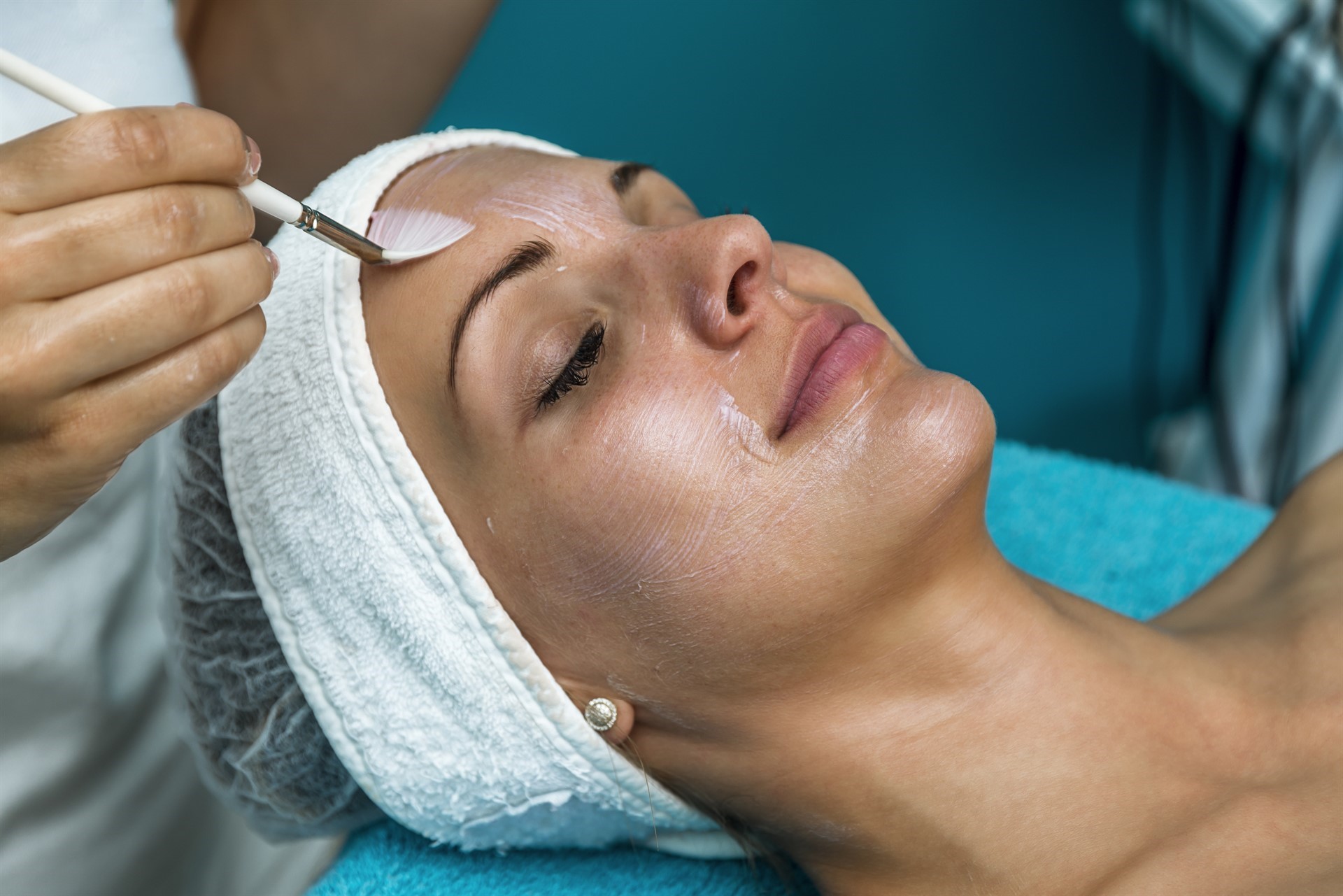Appealing results start with a chemical peel

Why are chemical peels done? They are done to make the epidermis more porous (thus maximizing nutrient delivery from products), reduce fine lines, for softer/smoother skin, to minimize scarring, for a more rejuvenated appearance, improve skin texture, decrease appearance of photodamage, decrease melanin content which can improve blotchy sun damage and post-inflammatory hyperpigmentation (brown spots from acne or other damage), and also for acne treatment.
Light Chemical Peels are always recommended to be done in a series for the most benefit (4-8 peels in quick succession). They will penetrate the epidermis and may also penetrate the superficial dermis layer. You may be asked to pretreat the skin to thin the outermost layer of the epidermis and to reduce any post-inflammatory hyperpigmentation if prone to this. This may need to be done anywhere from 2-20 weeks, depending on skin type or may not need to be performed at all. For a better, more even chemical peel, a microdermabrasion is performed prior to starting the chemical peel.
There are many types of light chemical peeling agents that can be used and what agent is used depends on each individual’s needs and particular skin. These needs may change through the progression of treatment, so the peeling agent used may also change.
What occurs during the treatment? The skin is cleansed, removed of all oils, and microdermabrasion performed to decrease the outermost layer of the skin and make the peel penetrate more uniformly. Thereafter, the peel is placed on the skin at which time you will likely feel some burning/stinging sensation. This is very tolerable. Often times, multiple layers of the peeling agent are applied to the skin. Once the peel is complete, post treatment begins and can be different based on chemical peel used. Some are rinsed with water or other agent. Others aren’t rinsed at all. Additional agents that can be applied such as hydroquinone (for even more improvement of hyperpigmentation) can be added as well before or after the peel. At times, a hydrating mask is applied directly after the peel for a few minutes. This is followed by soothing serums, moisturizer, and a broad spectrum mineral based sunscreen.
Post-treatment: Following the treatment, you will be given a set of instructions to follow.
For two days post procedure:
- Stay cool! Heating internally can cause hyperpigmentation.
- Do not put treated area directly into a hot shower spray.
- Do not use hot tubs, steam rooms or saunas.
- Do no direct a hair dryer onto the treated area.
- Do not go swimming.
- Do not participate in activities that would cause excessive perspiration.
- Do not use loofahs or other means of exfoliation.
- Do not direct a hair dryer onto the treated area.
- Do not apply ice or ice water to the treated area.
- Please follow skincare instructions as provided by physician.
- In addition, avoid any direct sunlight for 72 hours.
- Acne breakout can be expected after the first 1-3 treatments.
- Avoid any emollients, like Vaseline on the skin after the peel.
- If you have a history of ever having a cold sore, then let the physician know, as you will need to start a prophylactic medication (Valtrex) on the day of the chemical peel to help control a possible reoccurrence/outbreak of the herpes virus in the area and continue this for up to 7 days (follow treatment time as discussed with the physician). If an outbreak does occur, contact the office immediately for instructions.
General guidelines:
- After receiving a chemical peel, the skin may look and feel like a mild windburn for the next 2 or 3 days. After 48 hours, a slight flaking may occur for 3 to 5 days which can easily be controlled with moisturizers.
- It is recommended that makeup not be applied the day of treatment, as it is ideal to allow the skin to stabilize and rest overnight.
- To minimize side effects and maximize results, use the post procedure products for 3 to 5 days or until flaking has resolved.
- Moisturizer should be applied at least twice a day but can be applied more frequently for hydration and to decrease the appearance of flaking.
- Avoid direct sun exposure and excessive heat. An SPF of at least 30 must be used daily.
- Do not go to a tanning bed for at least two weeks post procedure. This practice should be discontinued due to increased risk of skin cancer and signs of aging.
- Do not pick or pull on any loosening skin. This could potentially cause hyperpigmentation.
- Do not have any other facial treatment for at least one week after your peel. You may resume the regular use of retinoids, alpha-hydroxy acid, beta hydroxy acid, vitamin c or bleaching creams ONLY after peeling process is complete.
- Call the office for any persistent redness, swelling, discoloration after peeling, excessive acne, blister-like lesion development such as cold sores or other, many small whiteheads, excessive itching, or other concerns.
